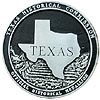| |
|
|
The Garden Club of Houston |
|
 |
|
Montrose Blvd. and Main St., Houston,
TX,
USA
|
| |
| |
|
Texas State
Historical Marker |
In 1924, seven friends who lived near the newly constructed Museum of Fine Arts formed the Garden Club of Houston. They planned to study horticulture, experiment with new plants and further the beautification of the city of Houston. From this small beginning developed an institution that has had a great influence on the city's private and public landscapes. Garden Club members assumed the maintenance of the museum grounds in 1931. Noted New York landscape architect Ruth London designed a master plan for the museum's south garden including a balustrade and bench designed by William Ward Watkin, the museum architect, with sculpture by the head of the museum school. Contributions from members and club projects made possible the completion of the garden in time for the national meeting of the Garden Club of America in 1939. Because of its work on the museum grounds, the Garden Club of Houston was the first in the southwest to become a part of the Garden Club of America. In 1942 a bulb and plant mart became the Garden Club's main fundraiser. Many plants seen at these sales became familiar staples in area gardens. The Texas Medical Center Park, the hospice at the Texas Medical Center, the Museum of Natural Science, the Harris County Center for the Retarded, the Seaman's Center at the Port of Houston, Tranquility Park, Bayou Bend, Rienzi, Armand Bayou Nature Center and Buffalo Bayou Sesquicentennial Park are among the projects and civic organizations that benefit from the Garden Club of Houston's fundraising efforts. Many notable Houstonians have been among the small membership of the Garden Club of Houston, unusual in its longevity and success. (2000)
This page last updated: 7/15/2008 |
|
|
|
|


